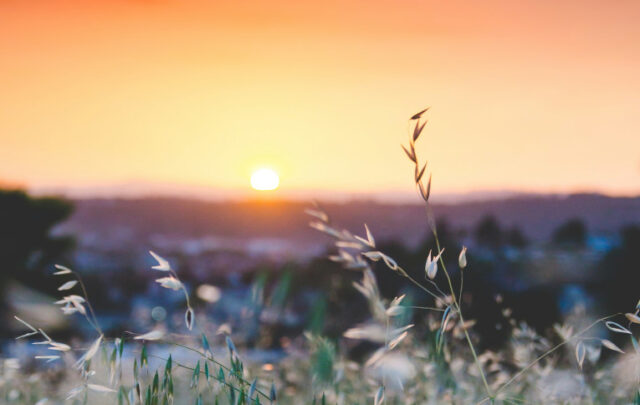“People are fed by the food industry, which pays no attention to health, and are treated by the health industry, which pays no attention to food.” –Wendell Berry
In the mornings before work, I jump in the river, and walk barefoot back to my clinic, looking for wild edibles and medicinal plants along the way. I live in my clinic these days. I moved in to save money when gas prices spiked, and the economy collapsed, but it has turned into a delightful low-carbon, über-local health-care experiment. I only pay one heating bill, one phone bill, and one electricity bill. I see patients with my dog by my side while my two boys are at school. Patients walk through my kitchen on their way in and out of my small office, and sometimes, after I’ve been talking to them about the importance of the microbiome, I offer them a taste of real sauerkraut, raw milk or kefir—all brimming with good bacteria. Twice a week I offer sliding-scale, group acupuncture treatments in my living room, where the mammalian comfort of patients taking naps near each other seems to be an added bonus to the healing process. In the evenings, I teach classes on personal and community resiliency, deep self-care, and peer support for community leaders. I have spent the last seven years writing about sustainable medicine, and trying to define (and bring into practice) what a truly sustainable health-care system would look like.

Photo by Abigail Feldman
This is not a simple thing. In order for people to be healthy in the long term, nearly every other aspect of life comes into play. When people thrive, you can generally look around and see that the natural environment around them has been well cared for, their relationships are solid, they have abundant, nutrient-dense food to eat, a just society to live in, and they are living in relatively peaceful times. We now also know that we rely heavily on communities of beneficial bacteria in and on our bodies for physical and emotional health, immunity and even proper development.
The microscope, the telescope, and the deep-sea camera have helped us to rediscover that we are part of a vast interdependent web of relationships, and whatever happens in one part of the system affects the whole. This means that there is no such thing as “human health” apart from the rest of the planet, there is only health. When I use the word “medicine” I mean something much more profound and far reaching than medical care practiced by, and for, humans. The planet itself has become something like a field hospital, with new species limping in each day, and others going extinct.
The “Sterile” Model of Care
Both agriculture and medicine went through a profound shift in the past two hundred years. As I have tried to understand the issues of our current health care system, it has been useful to note the parallels between industrialized agriculture and medicine as they adapted to the larger markets of the modern-day growth economy.
Both agriculture and medicine shifted away from what I would call a “fertile” model, and towards a more “sterile” one, that competed with, or killed off, what was not wanted. We turned away from stewardship, collaboration, and cooperatives, and towards competition, profits and patenting. We used pesticides and herbicides, rubber gloves and antibiotics, and turned away from compost and manure, human touch and probiotics. Both agriculture and medicine shifted from seeing things in the context of whole integrated systems, focusing instead on individual parts. We moved away from diversification and focused instead on specialization, we abandoned small-scale localized infrastructure and invested in large-scale corporations. In the process, we lost touch with traditional knowledge that works with natural patterns and cycles, and rushed instead into chemical and high-tech manipulation of nature. This left us with a planet swimming in industrial waste and struggling to adapt to an entirely new climate—all in the guise of feeding ourselves and keeping ourselves healthy.
In high-tech, industrial models of agriculture and medicine we tend to focus on:
- Human manipulation of nature
- Machines, speed, and technology
- Isolating parts to understand the whole
- Killing off “bugs” with pesticides or antibiotics
- Laboratory knowledge
- Mono-cropping and specialization
- Simple chemical fertilizers and synthetic vitamins
- “Sterility” and separation from the natural environment
- Growth, profits, and corporations
- Large, centralized farms and hospitals, and global production of supplies
Bio-Mechanistic Puzzles
The industrial farming model—in which we put an animal in a box, away from its natural environment, give it antibiotics and hormones and then try to determine what nutrients it needs to be maximally productive, or we put a seed into “sterilized” dirt, kill off all the weeds and bugs with chemicals, and try to figure out what artificial fertilizer the seed needs to be maximally productive—is strangely similar to the industrial medical model. We tend to look at patients, like the cow or the grain, as if they were bio-mechanistic puzzles. We put a patient in a private room, away from natural influences, and give him industrially-made food and medicine with the goal of keeping him alive and functional as long as possible so he can be a productive member of society. It’s not a bad goal, just an odd way of getting there: since it doesn’t take into account its effect on everything outside of the hospital.
As we have changed our outer landscape with industrial agriculture and changed our inner landscape with industrial medicine, we have created new problems—many of them intertwined in the ongoing relationships between food and health, and health care and the environment. These include loss of beneficial bacteria, loss of essential micro-nutrients, dwindling supplies of clean drinking water, antibiotic resistance, superbugs, auto-immune diseases, and a general loss of resiliency.
Ironically, modern health-care itself, practiced in the context of the for-profit growth economy, has become a contributor to our health-care problems. According to the Journal of the American Medical Association, adverse reactions to pharmaceutical drugs properly administered are estimated to be somewhere between the fourth and sixth leading cause of death in the United States.[1] [2] Pharmaceuticals persist in sewage and water-treatment plants, adding other people’s medications (and their side effects) to our daily drinks, and spilling antidepressants and cholesterol-lowering drugs into rivers and lakes where they affect wildlife.[3] [4] [5] Until recently, hospital incinerators were a major contributor to cancer-causing dioxins in the environment.[6] Health care is hugely dependent on fossil fuels for heating, cooling, and power, as well as for the raw materials, manufacturing, and transport of medical supplies and pharmaceuticals.[7] If you take into account all that goes into running a hospital, medical care for one patient spending a single night in a large teaching hospital adds nearly one metric ton of climate-disrupting CO2e to the atmosphere.[8]
When we change the biology around us, the chemistry around us, the genetics around us and even the physics around us, we change the systems that we rely on for health and survival. As we begin to fathom the interconnectedness of life, the doctor’s mandate “first, do no harm,” becomes a much more complex task.
The question is: how do we adapt our forms of caring for one another to take all these aspects into account?
Our Common Roots with the Natural World
Farmers and scientists working within the permaculture and sustainable agriculture movements have already questioned the long-term workability of large-scale industrialized agriculture. Out of these concerns have come many new integrated models that revive traditional wisdom without necessarily abandoning technology altogether. These farming methods produce healthier, more resilient crops and animals that actually enrich the landscape, rather than depleting and polluting ecosystems. I think medicine is ready to do the same.

Photo by Didi Pershouse
To do so means that we must acknowledge our place as one of many species living within—and dependent upon—a healthy functioning whole. We evolved out of the same natural cycles, patterns, and events as the land around us—and we struggle with many of the same issues. Plants and animals deal with bacterial, viral, fungal and genetic illnesses just as we do. They also rely on a wide variety of beneficial microorganisms for survival, just as we do. They are affected in various ways by insects and uncertain weather patterns, and they need nutrients and water, just as we do. When they are resilient, they adapt and change and evolve, just as we do.
We can draw many of the solutions for taking care of our inner landscape and growing healthy people from seeing how sustainable agriculture takes care of the outer landscape to grow healthy food.
The sustainable/organic/permaculture models of agriculture and medicine tend to value:
- Complexity and diversity
- Working with natural patterns and cycles
- Contextual understandings like Family Practice, and Permaculture
- Complex nutrients teeming with beneficial bacteria and fungi
- Boosting natural immunity and resiliency
- Using natural predators and healthy bacteria to balance out inner or outer ecosystems
- Collaboration and cooperatives
- Multi-purposed stacking of functions
- Small, localized, easily accessible farms, clinics, producers, and providers integrated into the community
- A slow and steady pace, and long-term connections
- The integration of traditional knowledge and indigenous ways of knowing along with creative use of technology
Returning to the Commons of Care
The future of health care, from what I can see, involves stepping out of the for-profit model and returning to the commons of care. If teachers, road maintenance crews, police and firefighters can provide for our social and physical needs in a model that doesn’t include corporate profits, then doctors, nurses, researchers and creators of pharmaceuticals and medical supplies can do the same. No matter what political system one believes in for the larger society, profit motives have little or no usefulness in the ecology of care.
I encourage those wanting to practice sustainable medicine to welcome in human collaborators as well as a wide variety of microorganisms and other natural allies. The time is ripe to study ecological models of the body, and apply pattern language and permaculture principles as we diagnose and treat illness. By doing that, we can understand the interrelationships between people, pollinators, healthy soil and food, and prescribe traditional diets that replenish the good bacteria in the gut. When prescribing pharmaceuticals or recommending technological interventions, we must do so with the precautionary principle in mind.
Now that we have already committed to at least a short-term climate crisis, health care itself will also need to quickly adapt if we want to continue to provide care in an era of increasing natural disasters, power outages, water shortages and supply chain interruptions. For providers and community members alike, I recommend reskilling in low-impact, carbon-neutral ways of caring for ourselves and others, in order to lessen the impact on the species that share our earth, and lessen the need for high-tech care in an age of powering down and re-localization.
Didi Pershouse’s book Sustainable Medicine: Reimagining Care with Our Inner and Outer Ecosystems in Mind will be available in 2014. You can pre-order copies at:www.sustainablemedicine.org.





